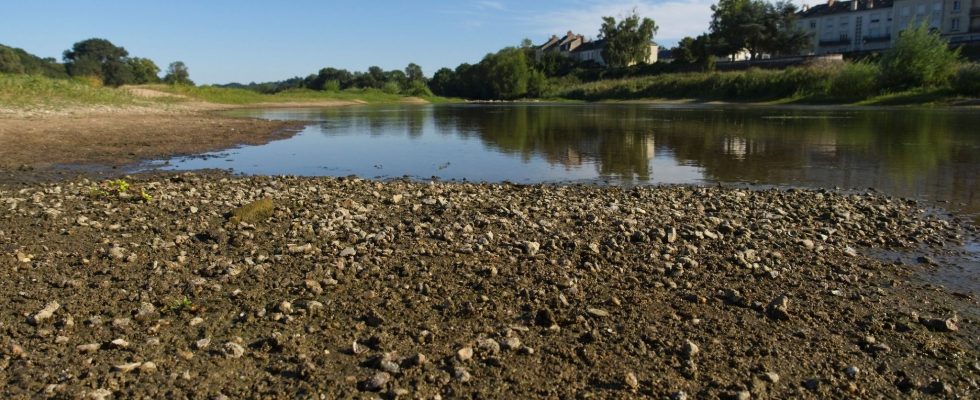Alerts follow one another on the level of underground water tables. The vast majority shows a very low level for the season, auguring a summer period marked by droughts, even though some departments are already experiencing water restrictions. How to ensure the recharge of these aquifers without relying solely on major rainfall events? That’s what experimentation is all about. “R’Garonne” which began in April for a period of four years.
It aims to artificially replenish the alluvial aquifer of the river in winter in order to support its low water level (its lowest level) during critical periods of summer. And thus reduce potential conflicts of use in the event of tension. The chosen system is not innovative: it was already used… by the Romans. “It’s really rustic,” admits Yann Oudard, deputy director general of Réseau31, the public water service associated with the Departmental Council of Haute-Garonne and the BRGM (Bureau of Geological and Mining Research) for this experiment.
Disused old canals have been rehabilitated. They are fed by the Saint-Martory canal, parallel to the Garonne, and convey the water by gravity to “infiltration” sites. These can take several forms: porous channels, old abandoned excavation areas (eg gravel pits) or infiltration basins created for the occasion. Rustic again. “These are earthen canals that look like ditches”, describes Yann Oudard. Water then flows from these sites to the aquifer to recharge it. Storage in the test area, around 100 km2 near Cazères, south of Toulouse, “is estimated between 5 and 20 million cubic meters. It’s huge”, comments Sébastien Vincini, the president (PS) of the Departmental Council .
A replicable experiment?
The infiltration tests will begin next winter, for the first results at the end of 2024. The objectives of the project, “one of the most important in Europe” according to its promoters, are ambitious: to achieve at best “between one and two m3 infiltration per second, details the deputy director of Réseau31. And even if we manage to only 500 liters of water per second, the experiment will allow us to model everything that happens in the ground”.
Many questions remain about the groundwater cycle. How long does the water take to infiltrate to the water table? What about its quality, even if the soils are natural purifiers? Does it benefit the Garonne at the right time? What volume is finally returned? “This is the whole purpose of scientific monitoring, recognizes Sébastien Vincini. This somewhat forced – but natural – push of the slicks is a good idea on paper, but perhaps the area is not the most appropriate. We’ll see if it’s replicable elsewhere.”
This artificial recharge technique is already deployed in California, Australia and Israel. But it remains rare in Europe, at least for environmental use. “In France, groundwater reinfiltration has already been used for single uses: drinking water [NDLR : le projet Aquarenova à Hyères] and irrigation. It’s the first time we’ve used it for an overall objective”, comments Yann Oudard. Why not earlier? “Because we had water and we had never reached such extreme situations. We are up against the wall, summarizes Marie Pettenati, hydrogeologist at BRGM. This underground system has advantages: it avoids the phenomenon of water evaporation and proves to be a fairly low cost solution. Requests from communities are accelerating, many feasibility studies are underway.”
Geology and land can be brakes
“The enthusiasm is strong around this type of solution”, confirms Laurent Cadilhac, groundwater expert at the Rhône Mediterranean Corsica Water Agency (RMC), who is studying these possibilities in the Rhône basin. Except that they are not feasible everywhere, for questions of resources and geology of the territory. “You must have easy access to nearby water, have good retention quality in the aquifers, a sufficiently large storage capacity, a certain configuration of the water tables…”, list Laurent Cadilhac. Another difficulty: land. “The availability of land can be a brake”, adds Marie Pettenati. In Haute-Garonne, negotiations are taking place with farmers to recover land and install infiltration sites there. “There are places where it works, others less,” concedes Yann Oudard.
These are therefore not the ingredients of a miracle solution, transposable to all the layers in tension. “But it is complementary to other water savings”, agrees Julie Jeanpert, hydrogeologist at the RMC Water Agency. “It allows you to reduce the pressure on the environment and, above all, to improve all the uses, not just one”, adds Sébastien Vincini. What’s more, at a lower cost. In a report submitted at the end of 2021 to Unescothe International Association of Hydrogeologists (IAH) reviewed 28 artificial aquifer recharge projects around the world, and concluded that the costs of such devices were almost half those of other methods of increasing the volume of groundwater. usable water.
